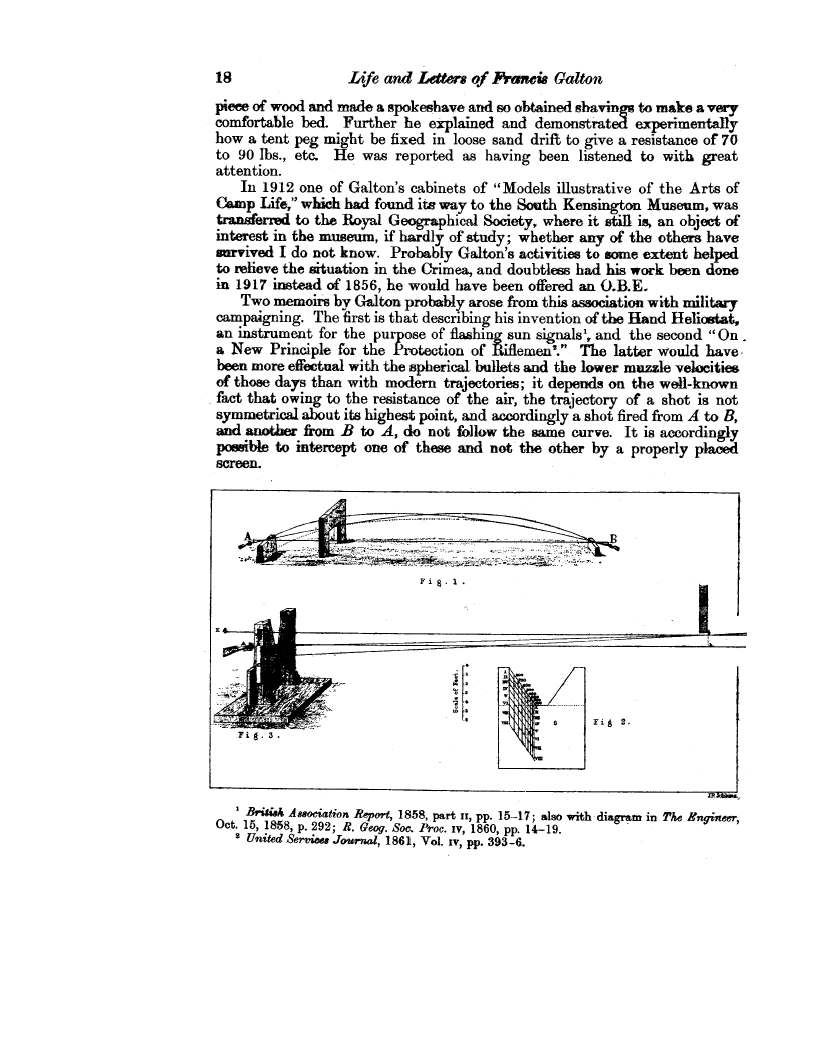18 Life and Letters of Francis Galton
piece of wood and made a spokeshave and so obtained shavings to make a v comfortable bed. Further he explained and demonstrated experimentally how a tent peg might be fixed in loose sand drift to give a resistance of 70 to 90 lbs., etc. He was reported as having been listened to with great attention.
In 1912 one of Galton's cabinets of "Models illustrative of the Arts of Camp Life," which had found its way to the South Kensington Museum, was transferred to the Royal Geographical Society, where it still is, an object of interest in the museum, if hardly of study; whether any of the others have survived I do not know. Probably Galton's activities to some extent helped to relieve the situation in the Crimea, and doubtless had his work been done in 1917 instead of 1856, he would have been offered an O.B.E.
Two memoirs by Galton probably arose from this association with military campaigning. The first is that describing his invention of the Hand Heliostat, an instrument for the pur
'pose of flashing sun signals', and the second "On. a New Principle for the Protection of Ttiflemen'." The latter would have been more effectual with the spherical bullets and the lower muzzle velocities of those days than with modern trajectories; it depends on the well-known fact that owing to the resistance of the air, the trajectory of a shot is not symmetrical about its highest point, and accordingly a shot fired from A to B, and another f om B to A, do not follow the same curve. It is accordingly possible to intercept one of these and not the other by a properly placed screen.
rn .
' British Association Report, 1858, part it, pp. 15-17; also with diagram in The Engineer, Oct. 15, 1858, p. 292; R. Geog. Soc. Proc. iv, 1860, pp. 14-19. 2 United Services Joarnal, 1861, Vol. iv, pp. 393-6.

